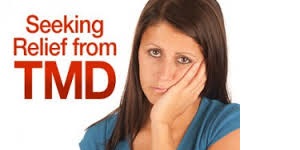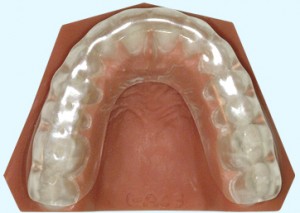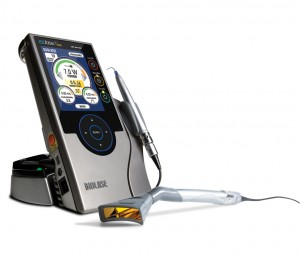Temporomandibular disorders (TMD) happen as a result of problems with the jaw, jaw joint, and surrounding facial muscles that control chewing and moving the jaw. These disorders are often incorrectly called TMJ, for temporomandibular joint.
Between 5 and 15 percent of people in the United States experience pain associated with TMJ disorders, according to the National Institute of Dental and Craniofacial Research, part of the National Institutes of Health. In most cases, pain and discomfort associated with TMJ disorders can be alleviated with self managed care or nonsurgical treatments such as laser therapy and occlusal splint therapy.

Frequently Asked Questions:
Click on a question below to see the answer.
What is the Temporomandibular Joint?
The temporomandibular joint is the hinge joint that connects the lower jaw (mandible) to the temporal bone of the skull, which is immediately in front of the ear on each side of your head. The joints are flexible, allowing the jaw to move smoothly up and down and side to side and enabling you to talk, chew, and yawn. Muscles attached to and surrounding the jaw joint control the position and movement of the jaw.
What causes TMD?
The cause of TMD is not clear, but dentists believe that symptoms arise from problems with the muscles of the jaw or with the parts of the joint itself.
Injury to the jaw, temporomandibular joint, or muscles of the head and neck — such as from a heavy blow or whiplash — can cause TMD. Other possible causes include:
- Grinding or clenching the teeth, which puts a lot of pressure on the TMJ
- Dislocation of the soft cushion or disc between the ball and socket
- Presence of osteoarthritis or rheumatoid arthritis in the TMJ
- Stress, which can cause a person to tighten facial and jaw muscles or clench the teeth

What are the symptoms of TMD?
People with TMD can have severe pain and discomfort that can be temporary or last for many years. More women than men experience TMD and TMD is seen most commonly in people between the ages of 20 and 40.
Common symptoms of TMD include:
- Pain or tenderness in the face, jaw joint area, neck and shoulders, and in or around the ear when you chew, speak, or open your mouth wide
- Limited ability to open the mouth very wide
- Jaws that get “stuck” or “lock” in the open- or closed-mouth position
- Clicking, popping, or grating sounds in the jaw joint when opening or closing the mouth (which may or may not be accompanied by pain)
- A tired feeling in the face
- Difficulty chewing or a sudden uncomfortable bite — as if the upper and lower teeth are not fitting together properly
- Swelling on the side of the face
Other common symptoms of TMD include toothaches, headaches, neckaches, dizziness, earaches, and hearing problems.
How is TMD diagnosed?
Because many other conditions can cause similar symptoms — including a toothache, sinus problems, arthritis, or gum disease. Dr Wu will conduct a careful patient history and physical exam to determine the cause of your TMD symptoms.
He will examine the temporomandibular joints for pain or tenderness; listen for clicking, popping, or grating sounds during jaw movement; look for limited motion or locking of the jaw while opening or closing the mouth; and examine bite and facial muscle function. Sometimes panoramic and TMJ radiographs will be taken. These radiographs will allow Dr. Wu to view the entire jaw, TMJ, and teeth to make sure other problems aren’t causing the symptoms. Sometimes other imaging tests, such as magnetic resonance imaging (MRI) or a computer tomography (CT), are needed. The MRI views the soft tissue, such as the TMJ disc, to see if it is in the proper position as the jaw moves. A CT scan helps view the bony detail of the joint
What treatment are available for TMD?
Treatments for TMD range from simple self-care practices and conservative treatments (such as a splint and laser therapy) to injections and surgery. Most experts agree that treatment should begin with conservative, nonsurgical therapies first, with surgery left as the last resort. Many of the treatments often work best when used in combination. Please Discuss with Dr. Wu what options might best fit you.

Occlusal Split/Orthosis Used to treat TMD.

Biolase EZlase 940 used in TMD Treatments
Source: WebMD




